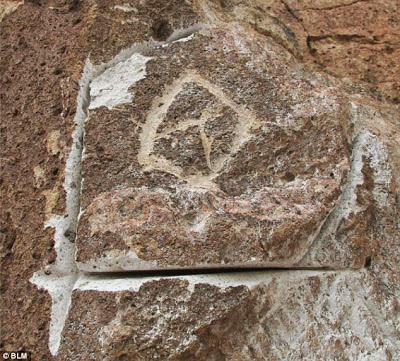 |
| Town Creek Indian Mound State Historic Site |
When California’s Environmental Quality Act captures public attention, it’s usually because of a struggle between developers and business interests on one side and environmentalists on the other.
But for the Native American community, CEQA has a deeper significance: It is viewed as a tool in maintaining the tribes’ cultural heritage when their land has been targeted for development, or disturbed otherwise, and the inevitable legal battle ensues.
A number of lawmakers and tribes are attempting to expand the 45-year-old CEQA statute specifically to include protections for Native Americans’ cultural heritage. On Thursday, legislation to do just that was approved by the Assembly 56-0 and sent to the Senate.
“My tribe was forced to pay over $20 million to preserve our one and only creation area, because of a broken CEQA,” attorney Laura Miranda of the Pechanga Band of Luiseño Indians testified during a hearing of the Assembly Committee on Natural Resources.
 |
| Assemblyman Mike Gatto |
The inclusion to protect these resources in CEQA was originally addressed back in 2004, with a Senate bill that incorporated the input of Native American tribes into various layers of the local land-use planning process.
But clashes between tribes and developers and local agencies in recent years have proven the ineffectiveness of the earlier law, observers say.
According to Heather Baugh, assistant general counsel in the Resources Agency who specializes in CEQA, the lead agency involved in a project should consult with the tribes in instances when they may be intruding on a valued site. The lead agency could consider hiring an archeologist, or maybe tribal members, to survey the site to ensure said area is sacred.
“Tribes don’t have a role in the CEQA process,” said Miranda. “Right now CEQA has a section on archaeological resources, but those are all analyzed from a specifically archaeological perspective.” This scientific view doesn’t take into consideration other meaningful qualities of an area, such as the spiritual history.
But this checklist doesn’t address to all areas of concern for California’s Native American tribes.
What is currently purported to protect Native American cultural resources does not explicitly require the involvement of tribes in the consultation process regarding projects affecting their cultural resources and sacred sites.
In some cases, this has led to areas of importance for tribes to fall between the cracks of development.
 |
| Pechanga Tribal Chairman Mark Macarro shows sacred site where quarry was proposed. Riverside Press Enterprise, 11.19.2012 |
In 2011, Granite Construction Inc. was planning to effectively blow up an area considered by the Pechanga and Luiseño People to be the place where the “Earth and Sky came together and formed the World,” according to the tribes documentation opposing the project.
“Because CEQA didn’t work for bigger site protection, we ended up having to buy our creation area from a mining company for $20 million,” said Miranda. “Everything was there, on record… it was already on the national historic register. All of the evidence was there, but it was still going to be allowed.”
“AB 52 clarifies the role of the Native Americans within the CEQA process and it requires a more involved consultation with tribes for projects which affect tribal cultural resources and sacred sites,” Gatto said.
But development and business interests are suspicious of Gatto’s bill.
Representatives for both California’s Chamber of Commerce and the state’s Building Industries Association appeared before committee hearings oppose the bill, saying they concerned the measure would give the tribes veto authority over projects within the state.
Lead agencies would, however, have the opportunity to impose a statement of overriding considerations., which basically allows the project to continue based on public interests, despite an adverse environmental impact.
This additional layer to an already extensive CEQA process may stress individuals and groups that desire to begin local land use projects, but this is arguably meager in comparison to the concerns of the tribes.
“Under current law, if a tribe wants to have input on a sacred site…. something that could be of profound religious significance for that tribe, that tribe is forced to go into negotiations as a member of the public,” said Assemblyman Gatto. Meaning tribes have no greater legal standing in these issues than someone completely unaffiliated with the culture.
You can read this article and more at the Capitol Weekly HERE
Mike Gatto is the Chairman of the Appropriations Committee of the California State Assembly. He represents the cities of Burbank, Glendale, La Cañada Flintridge, the Los Angeles neighborhoods of Los Feliz, Silver Lake, Atwater Village, and portions of the Hollywood Hills and East Hollywood. www.asm.ca.gov/gatto
Mike Gatto is the Chairman of the Appropriations Committee of the California State Assembly. He represents the cities of Burbank, Glendale, La Cañada Flintridge, the Los Angeles neighborhoods of Los Feliz, Silver Lake, Atwater Village, and portions of the Hollywood Hills and East Hollywood. www.asm.ca.gov/gatto
























